Digging for the “Frill” of It
Torosaurus, Evan Howard, CC BY-SA 2.0, via Wikimedia Commons

Flying away from a storm!
As our tiny, eight-passenger Cessna 402C aircraft left the airport on the way to Glendive, Montana, it was a bit of a bumpy start as we flew through the edge of a storm. The small plane would have been no match for the mighty storm, but thankfully our skilled pilots were able to quickly get us outside the storm’s reach as we flew in the opposite direction.
Once we arrived in Glendive, my excitement grew. This was my first time taking part in a joint AiG/FACT dig. We had a group of 14 that would be joining us, coming from all across the country. Monday through Friday, they would receive lectures, take part in field work out on two separate dig sites, and work in the fossil prep lab working to clean and restore fossils that had been excavated. The goal for the week was to give our guests a glimpse into the world of paleontology and a chance to find and take some fossils home.
Leading the team were my good friends Tommy and Martha Lohman, field paleontologists at the Glendive Dinosaur and Fossil Museum (the GDFM is a biblically based museum run by the Foundation Advancing Creation Truth, or FACT).
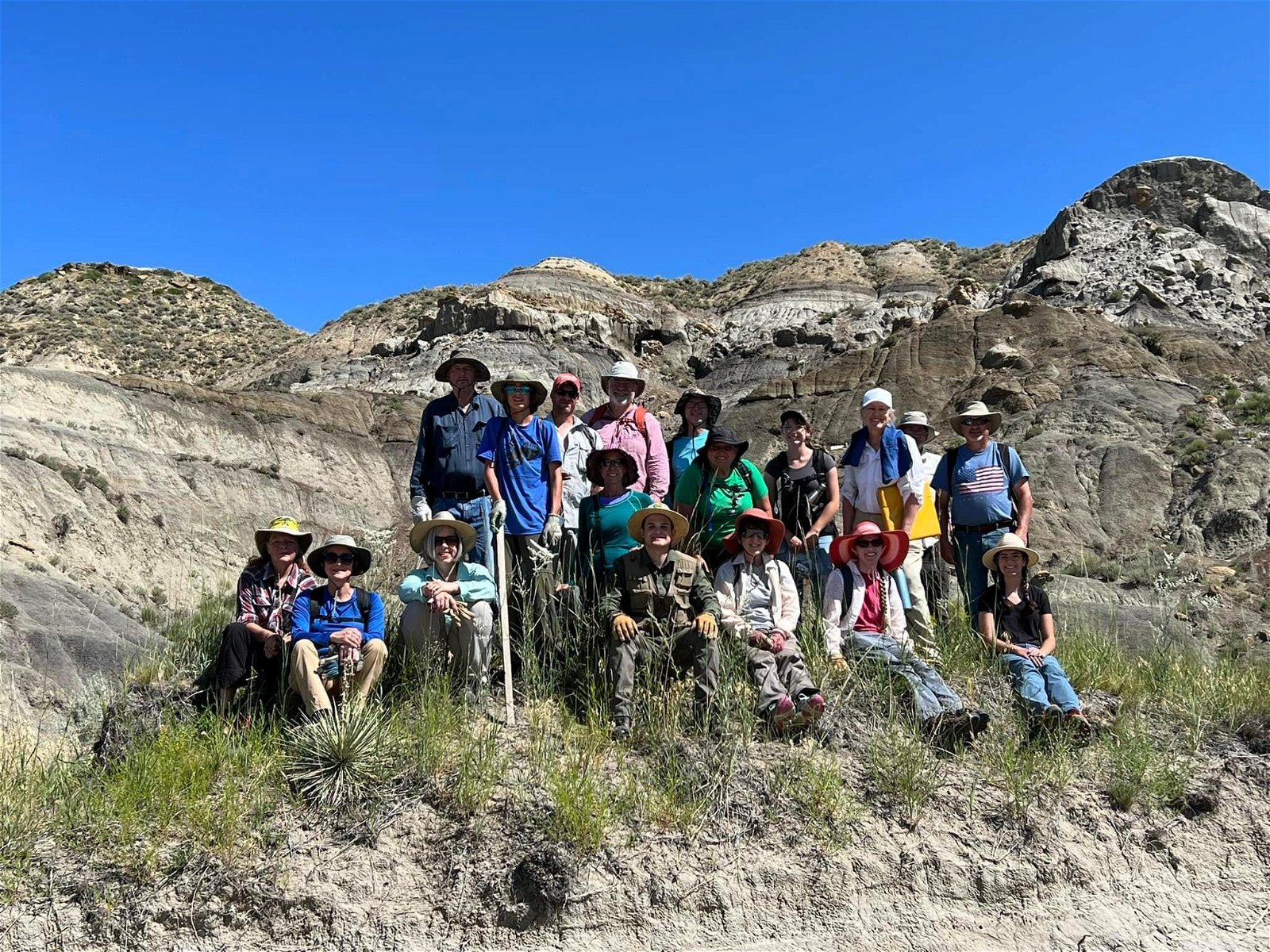
The dig group with staff from the Foundation Advancing Creation Truth (FACT).
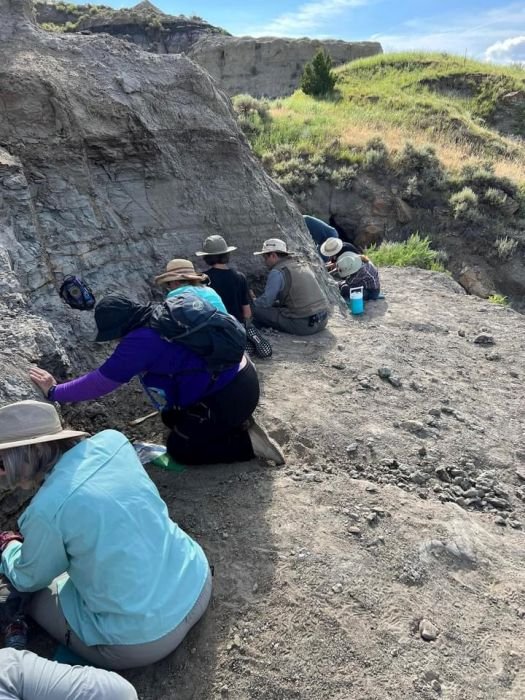
The dig group looks for small fossils in this hillside.
Our first day consisted of a tour of the GDFM. The second day, we headed out to the dig site. Prep work to get the site ready for the guests had already been done, so they were able to jump right in. Using screwdrivers and brushes, they began to meticulously work their way through the sediment. The first day’s finds consisted of several chunks of unidentified dinosaur bone, a claw belonging to either a turtle or a crocodilian, and a tail vertebra belonging to an Edmontosaurus.
The third day was spent half in the field and half in the lab. Throughout the week, I was rarely doing any digging myself, instead assisting our guests and helping to identify fossils they found. Toward the end of the morning, a young man named Bryson approached me holding a partial tooth. As I examined it, I knew it came from a large theropod dinosaur. In fact, this tooth belonged to none other than a Tyrannosaurus rex!
Now this tooth was small, likely from a 12- or 13-year-old juvenile. However, the tip of the tooth was missing. Based on the lack of sediment on the inside of the broken area, we knew this break had not happened a long time ago, but rather within the last few minutes.
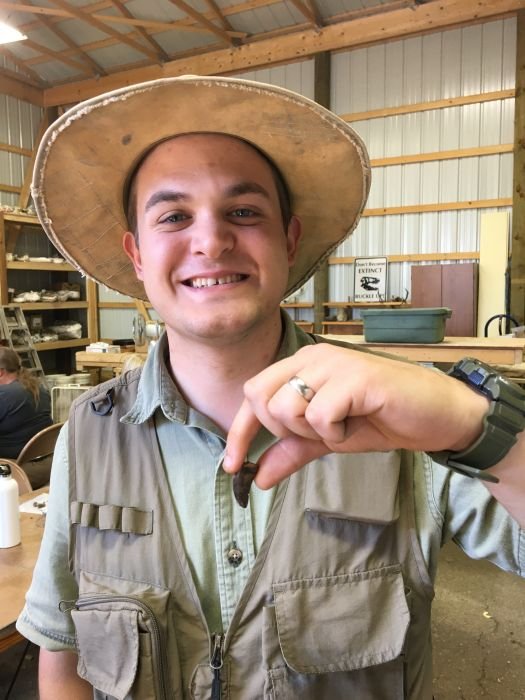
This tooth is from a juvenile T. rex.
Tommy, understanding the significance of the find, instructed the two gentlemen who had found it to start sifting the sand at their feet through a pan-sifter in order to find the missing tip. A couple of tries yielded nothing. During the third pile of sand, I knelt down to take a look. There among some bits of coal was the characteristic, serrated edge of a tyrannosaur tooth. I reached in, pulled it out, and exclaimed, “I got it!” The tip perfectly matched the rest of the tooth and was cleaned and restored back at the lab.
Later in the week, a second juvenile T. rex tooth was found, this time with the tip still intact. Many more finds took place throughout the week, including a Triceratops tendon, a coprolite (fossilized dung), and a large, mostly intact turtle shell.
The team of guest diggers left on Friday afternoon, and Tommy, Joshua, and I went out the following morning to the ranch that partners with the GDFM. We went to work on a Triceratops sacrum (part of the hip structure) that was partially excavated. While working, we took a break to look at a mostly eroded frill of another type of ceratopsian, Torosaurus. Similar in size to the Triceratops, Torosaurus specimens are believed by some to be nothing more than old Triceratops, however this is disputed among paleontologists, and many (myself included) still consider them to be a separate species.
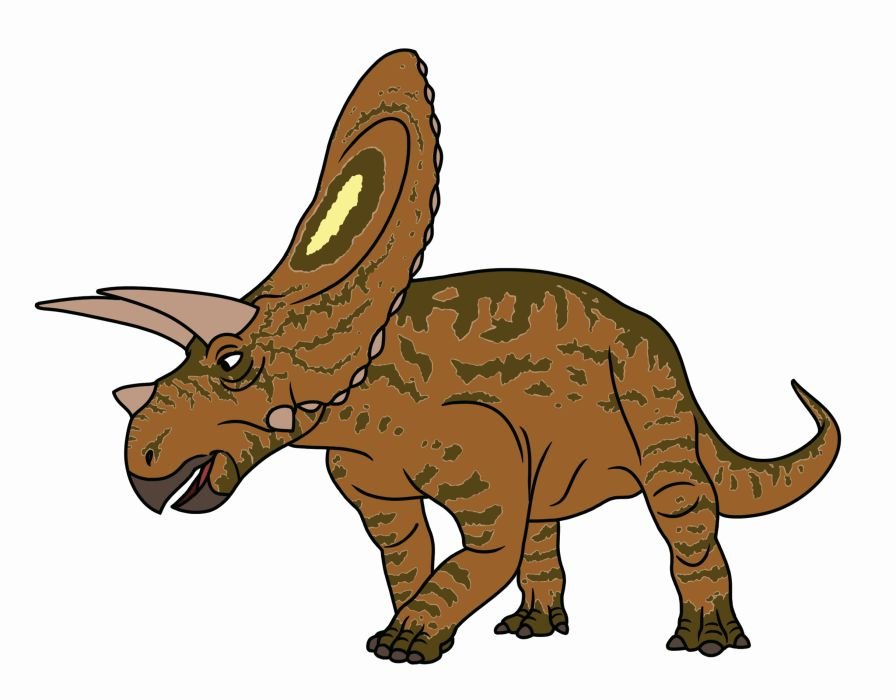
Torosaurus
Torosaurus is characterized by having a much-longer and less-curved frill with two large holes in it and a less pronounced nasal (nose) horn. The frill of this particular individual had been found years before but was unable to be excavated. Therefore, over the years it had become heavily eroded and almost unrecognizable.
I had seen and worked on many Triceratops fossils, but this was my first time seeing the actual fossil of a Torosaurus. The diversity in the ceratopsian kind is simply amazing and points to the glory and creativity of our Creator God! When looking at these awe-inspiring reptiles, remember to stop and give God the glory and to thank him for the beauty of his creation and his never ending grace and mercy!
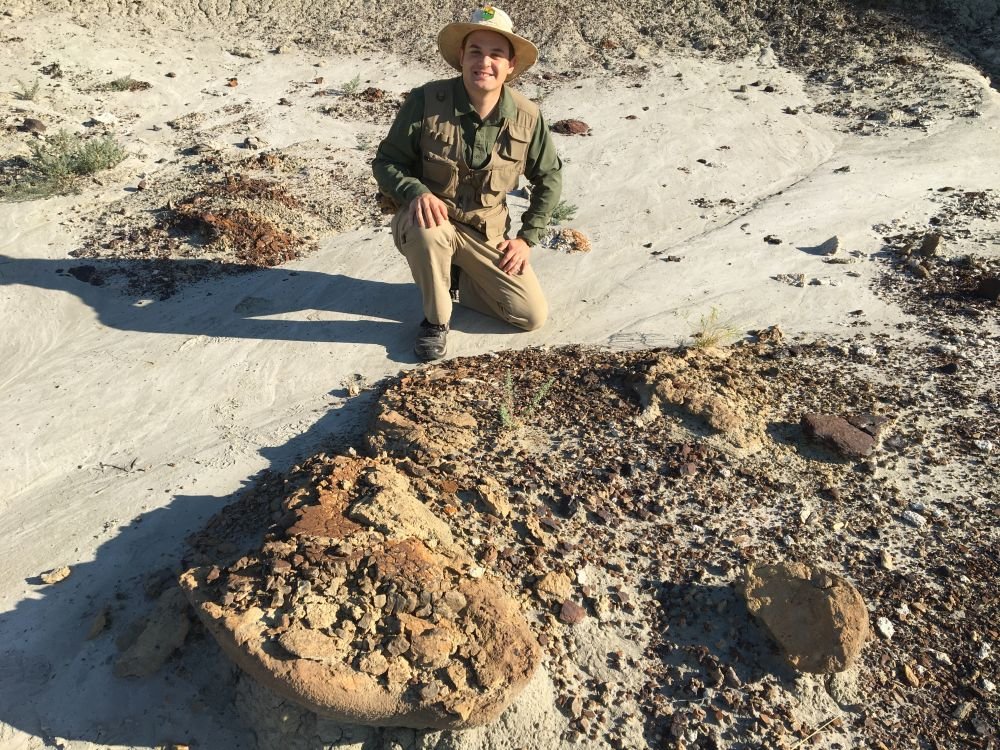
Partially eroded Torosaurus frill.
Come back next time to hear more about my adventures in the world of dinosaurs!
- © 2024 Answers in Genesis
- Privacy Policy
- Contact
- About
